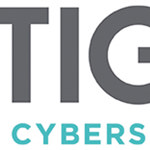The cybercriminal ecosystem: evolution and extortion
Law firms rely on their reputation, hold lots of confidential and valuable information belonging to their clients, and handle financial transactions. This combination makes them the ideal target for cybercriminals who, once inside a law firm’s IT systems, will use a number of different tactics to hold a firm to ransom.
The legal profession has seen a worrying number of cyberattacks in recent years. Ward Hadaway was threatened with the publication of confidential documents obtained in a cyberattack, which the hackers were holding to ransom in a bid to blackmail the firm out of $6 million. Meanwhile listed law firm Ince Group suffered a devastating attack which is estimated to have cost the firm £5 million, with other far-reaching consequences. The attack on Simplify Group in which personal information was stolen, resulted in extensive disruption to parts of the conveyancing market. Criminal defence firm Tuckers Solicitors’ £98,000 fine by the ICO is another reminder of the potential repercussions that firms can suffer as a result of a ransomware attack. There are many other examples.
Cybercrime is a dynamic landscape, with not only the types of attacks but the nature of the operators or gangs involved becoming ever more sophisticated. Understanding the ecosystem in which cybercriminals operate is the first step in understanding and managing the risks involved.
The criminal ecosystem
Cybercrime is an organised and sophisticated business with structured personnel, run by professionals. Ransomware gangs have team leaders, malware developers, data miners, and more – individuals and teams working together on cases like a legitimate business. And all over the world too: Russia is a hotspot for cyber gangs, but we’ve seen operations running from all corners of the globe.
While cybercrime has a far greater geographical reach and speed of execution, it also has many similarities in organisational structure to more traditional criminal gangs. However, it also has one major advantage. Its sophistication makes it extremely difficult for authorities to trace the perpetrators and originators of any cyberattack.
One interesting study compared cocaine trafficking in the 1990s with modern day ransomware. Profitability was similar, with both earning over 90% profit per unit. However, cocaine trafficking resulted in one arrest per 2kg, and one death per 4kg. The chances of a ransomware arrest are almost non-existent, a trafficker being 625 times more likely to get arrested. And no ransomware attacker gets killed.
The ransomware gangs have names, and some analysts even produce league tables with an assessment of market shares. In the second half of 2022, one assessment showed BlackCat in the lead with responsibility for around 15% of the ransomware attacks globally. Hive had the next largest share at 13.5%, having “earned” its place by attacking hospitals without question (some groups claim to shy away from certain sectors to operate more “ethically”). Other names such as Black Basta, Dark Angels, Phobos and Vice Society are said to hold between 3% and 6% of the market, the latter being responsible for attacks on UK schools. Previous leaders such as REvil, Conti, LockBit and DarkSide are likely to have morphed into new structures.
One of the most notable developments over the last few years has been the rise of Ransomware as a Service (“RaaS”), a business model not dissimilar to Software as a Service (“SaaS”). RaaS changed the face of cybercrime. A cybercriminal no longer needs to be a “techie”, as they can just purchase ready-to-go ransomware. It’s added a new layer to the cybercrime constitution.
Ransomware operators develop ransomware which is sold to affiliates via websites on the dark web, marketing and packaging it for sale in a manner similar to businesses that trade legitimately. They engage in marketing campaigns, publish user reviews, and provide service guarantees as well as after-sales support. Unsatisfied with the service? Suppliers offer your money back. Levels of sophistication range from subscription models to portals allowing tracking of the status of an infection.
This allows individuals in any country to get involved in criminal activity. Often they operate as lead generators: having gained access to a business, they pass on the opportunity to more sophisticated players to exploit in return for a cut in profits.
A recent report on ransomware trends published jointly by the UK, US and Australian cybersecurity authorities noted that the National Cyber Security Centre has even come across gangs who purport to offer a 24/7 help centre to victims to expedite ransom payments and restore encrypted data.
Double extortion
The consequences of ransomware can be devastating for its victims, as once inside an organisation’s IT system it enables data, files and systems to be encrypted, with payments being demanded in exchange for the decryption key. Business is brought to an abrupt halt. We find that backups are rarely configured in a way which will survive a ransomware attack. The overwhelming majority of ransomware attacks now also involve data exfiltration. The criminals first steal your confidential and sensitive data before encrypting it, adding another level of risk. This particular type of attack, sometimes called the double extortion technique, means that not only can a demand be made to decrypt data, but a release to the public of stolen data will be threatened unless a further ransom demand is met. Gangs have websites and PR machines which support their threats to highlight their successful attacks and publish stolen data.
In the past, some ransomware gangs focused on bigger, national targets. Now, some of them have become wary of the attention of law enforcement agencies (who save most of their resources for large infrastructure attacks), and have shifted their focus to small and medium-sized organisations. They can be particularly vulnerable to attack, because they often only rely on their external IT support companies, and therefore do not have the right protections in place.
One estimate shows professional services suffered around 20% of ransomware attacks in 2022, making it the worst affected sector. Cybercriminals know that firms have a duty to keep their clients’ affairs confidential, are working to deadlines, and that prolonged downtime can be disastrous. As a consequence, they can be more likely to pay ransom demands (which can range from the tens of thousands to many millions of dollars.)
It is however worth bearing in mind the Information Commissioner’s Office (ICO) and National Cyber Security Centre stance on this. In a joint letter issued in summer 2022 to the legal profession, the two bodies made it clear that payment of ransom will not protect stolen data or result in a lower penalty by the ICO, if an investigation is made. Furthermore, remember you’re dealing with criminals – payment offers no guarantee of decryption or return of stolen data or prevention of re-extortion a few weeks down the line.
An evolving threat requires professional defence
Cyberattacks shut down organisations and are now one of the most serious threats to any business. They should be at the top of your risk register. Attackers and the techniques they use are sophisticated, ever evolving, and defending against them is complex. Small and medium sized professional services firms are particularly vulnerable. When you have professional criminals attacking your organisation, you need professionals defending you.
Regulars
Perspectives
Features
Briefings
- Criminal court: Court declines rape sentence guidelines
- Employment: Reopening discipline proceedings – fair do?
- Family: Mediation – will Scotland catch up?
- Human rights: Abortion, protests and safe access zones
- Pensions: A good funding challenge for employers?
- Property: Title conditions – what’s in a name?
- Property: Scottish Barony Register – 2022 annual report
- Property: QES in a post-Covid world
In practice
- Public policy highlights: February 2023
- Accredited paralegal roundup
- Risk: Wills – the signing pitfalls
- Keep the faith with fax
- Calculating your carbon footprint
- Digital focus in new SLCC rules
- The Trades House: a charity funds management option
- The Society in a changing world
- Ask Ash: Homeworking when ill?







